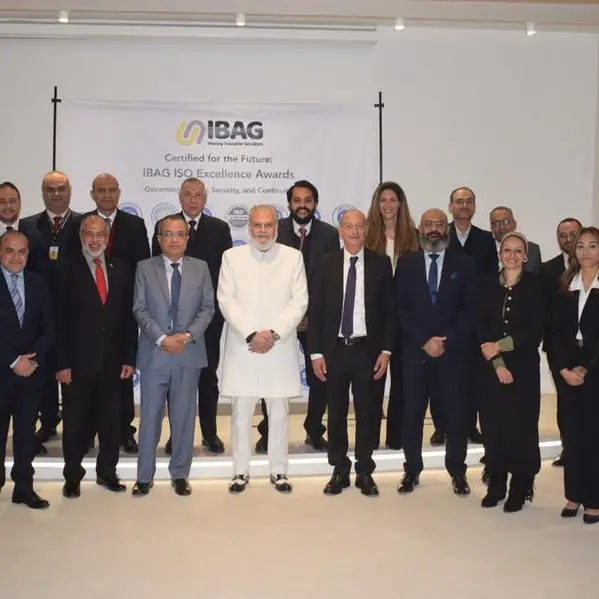Fitch Ratings - London: Fitch Ratings has affirmed Fibabanka Anonim Sirketi's (Fiba) Long-Term Foreign-Currency (LTFC) Issuer Default Rating (IDR) at 'B' with a Negative Outlook and Viability Rating at 'b'.
The Long-Term Local-Currency (LTLC) IDR has been affirmed at 'B+' with a Negative Outlook, one notch above the bank's VR, reflecting our view that the bank's qualifying junior debt (QJD) buffer will be maintained above 10% of risk-weighted assets (RWA) in the short term.
KEY RATING DRIVERS
Fiba's LTFC IDR is driven by its VR but capped at 'B', despite its large buffer of QJD (12% of RWA at end-1Q22), the size of which relative to RWA is positively correlated with the weaker lira. QJD is almost entirely made up of US dollar instruments, largely in the form of FC subordinated debt, but includes some local currency additional Tier 1. The cap reflects our view of government intervention risk in the banking sector. It also reflects our assessment that weaknesses in Turkey's external finances, amid high sector deposit dollarisation and high short-term maturing FC debt in volatile market conditions, make some form of intervention that would impede the bank's ability to service its FC obligations more likely than a sovereign default.
The Negative Outlook on the bank's LTFC IDR primarily mirrors that on the sovereign, but also considers heightened risks to the bank's credit profile given operating environment pressures.
The bank's 'B+' LTLC IDR reflects a lower likelihood of government intervention in local currency. This drives our view that Fiba's large QJD buffer could protect senior obligations in case of default, including in case of a capital shortfall.
The Negative Outlook on the LTLC IDR reflects that on the sovereign, but also captures a potential deterioration of the QJD buffer below 10% if the bank executes a call option on its sub-debt in November 2022, or sub-debt was only partially rolled. In the absence of the call being executed and the subdebt is prolonged, we expect QJD to remain above the 10% threshold. This is based on targeted loan growth of 30% in 2022 (mainly in lira), the current moderate uplift to capital ratios from regulatory forbearance and our expectation of further lira depreciation.
Fiba's senior unsecured debt is rated in line with the bank's FC IDR, reflecting average recoveries for this type of debt.
The bank's 'B' Short-Term IDRs are the only possible option in the 'B' rating category.
Fiba's 'A(tur)'/Negative National Rating reflects Fitch's view that the bank's creditworthiness in local currency relative to other Fitch-rated Turkish issuers is unchanged.
Small Franchise, Moderate Deleverage: Fiba has a small franchise (end-1Q22: 0.5% of sector assets) and limited ability to compete with larger banks in the volatile Turkish operating environment where its operations are concentrated. The bank deleveraged in 2021 (the loan book shrank by 7% net of currency moves), reflecting a cautious approach amid challenging market conditions and capital preservation efforts. Fiba's short-term strategy is to grow unsecured retail loans, underpinned by digital and 'ecosystem banking', and lira-denominated business loans.
Concentrated Portfolio: The loan book is concentrated by borrower and sector, despite deleveraging efforts. Business loans are concentrated in high-risk sectors such as tourism (end-1Q22: 15% of business loans), construction (7%) and energy (5%). The bank's high and growing share of unsecured retail lending is another risk factor. The bank has reduced its FC loan book in recent years to a level significantly below the sector average, although it was still fairly high at 24% at end-1Q22
Asset Quality Risks: Fiba's impaired loans (NPL) ratio (end-1Q22: 2.5%) is below the sector average (2.9%) but should be viewed in light of NPL sales and write-offs (2020-1Q22: equal to a cumulative 1.9% of gross loans) and high Stage 2 loans (14%; about 80% of which were restructured). NPLs are fully covered by total reserves.
Profitability Supported by Investment Income: Fiba's operating profitability rose significantly in 1Q22 (annualised 5.4% of RWA; 2021: 1.9%), but was boosted by a one-off TRY160 million investment income on private equity sales (3.3% adjusted basis), so the core ratio remained in line with 2021. We expect core profitability in 2022 to outperform 2021, notwithstanding pressures on operating expenses in the inflationary environment and on cost of risk.
Pressured Core Capitalisation: Fiba's common equity Tier 1 (CET1) ratio increased to 10.6% at end-1Q22 (9.7% excluding forbearance) from 7.7% at end-2021 (7.1% excluding forbearance), reflecting the conversion by its main shareholder of USD30 million of additional Tier 1 to common equity and high profit in 1Q22. Nevertheless, we still view core capitalisation as weak, given the bank's risk profile, asset quality risks and sensitivity to lira depreciation through potential inflation of the FC component of RWAs, although dollarisation is less than at peers.
The bank's total capital adequacy ratio is higher (23.7%), mainly underpinned by FC subordinated debt (call option in November 2022), which provides a hedge against lira depreciation.
High FC Deposits, Refinancing Risks: Fiba's deposits (end-1Q22: 60% of total funding) are granular but a high 51% are in FC. FC wholesale funding (18%) is also high, which increases refinancing risks, given exposure to investor sentiment amid market volatility. FC liquidity is sufficient to cover Fiba's FC debt due within a year but could come under pressure in case of inability to refinance long-term debts or FC deposit instability.
The bank's 'no support' Government Support Rating (GSR) reflects Fitch's view that support from the Turkish authorities cannot be relied upon, given the bank's small size and limited systemic importance. In addition, support from Fibabanka's shareholders, while possible, cannot be relied upon.
Link to Rating Actions: Rating Actions
-Ends-
Media Relations: Louisa Williams,
Email: louisa.williams@thefitchgroup.com
Additional information is available on www.fitchratings.com
DISCLAIMER:
ALL FITCH CREDIT RATINGS ARE SUBJECT TO CERTAIN LIMITATIONS AND DISCLAIMERS. PLEASE READ THESE LIMITATIONS AND DISCLAIMERS BY FOLLOWING THIS LINK: HTTPS://WWW.FITCHRATINGS.COM/UNDERSTANDING CREDITRATINGS. IN ADDITION, RATING DEFINITIONS AND THE TERMS OF USE OF SUCH RATINGS ARE AVAILABLE ON THE AGENCY'S PUBLIC WEB SITE AT WWW.FITCHRATINGS.COM. PUBLISHED RATINGS, CRITERIA, AND METHODOLOGIES ARE AVAILABLE FROM THIS SITE AT ALL TIMES. FITCH'S CODE OF CONDUCT, CONFIDENTIALITY, CONFLICTS OF INTEREST, AFFILIATE FIREWALL, COMPLIANCE, AND OTHER RELEVANT POLICIES AND PROCEDURES ARE ALSO AVAILABLE FROM THE CODE OF CONDUCT SECTION OF THIS SITE. DIRECTORS AND SHAREHOLDERS RELEVANT INTERESTS ARE AVAILABLE AT HTTPS://WWW.FITCHRATINGS.COM/SITE/REGULATORY. FITCH MAY HAVE PROVIDED ANOTHER PERMISSIBLE SERVICE TO THE RATED ENTITY OR ITS RELATED THIRD PARTIES. DETAILS OF THIS SERVICE FOR RATINGS FOR WHICH THE LEAD ANALYST IS BASED IN AN EU-REGISTERED ENTITY CAN BE FOUND ON THE ENTITY SUMMARY PAGE FOR THIS ISSUER ON THE FITCH WEBSITE.



















